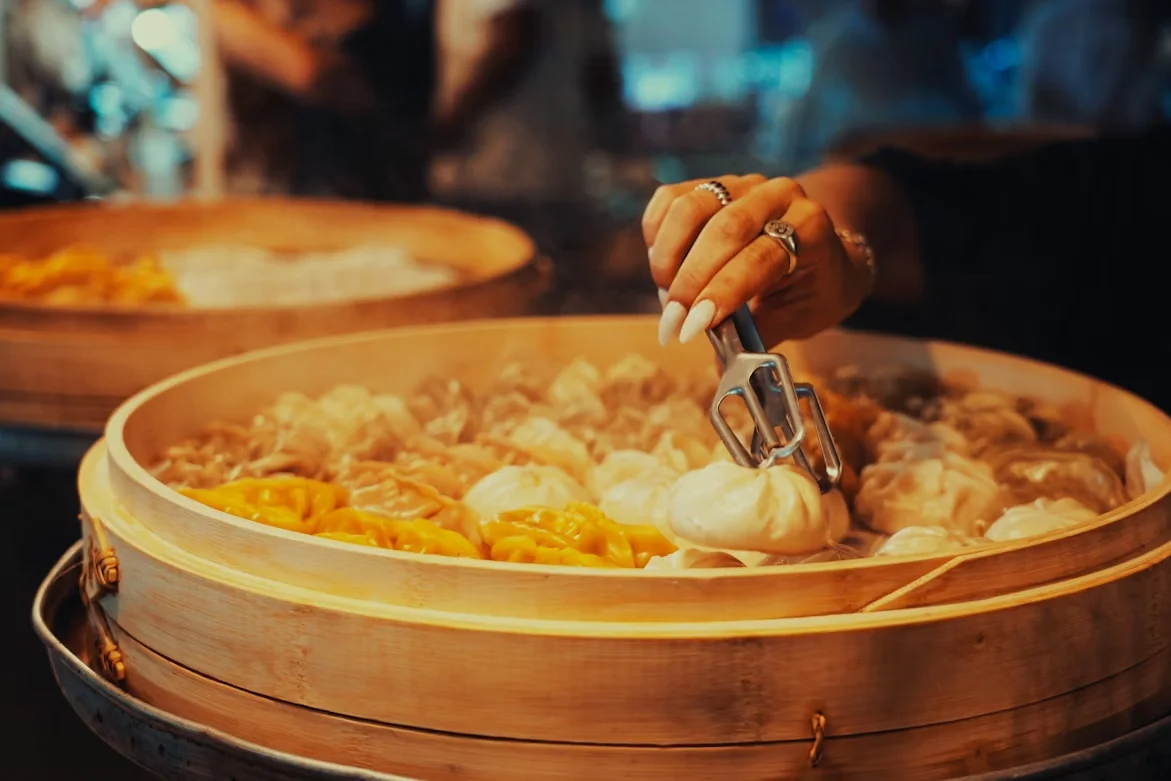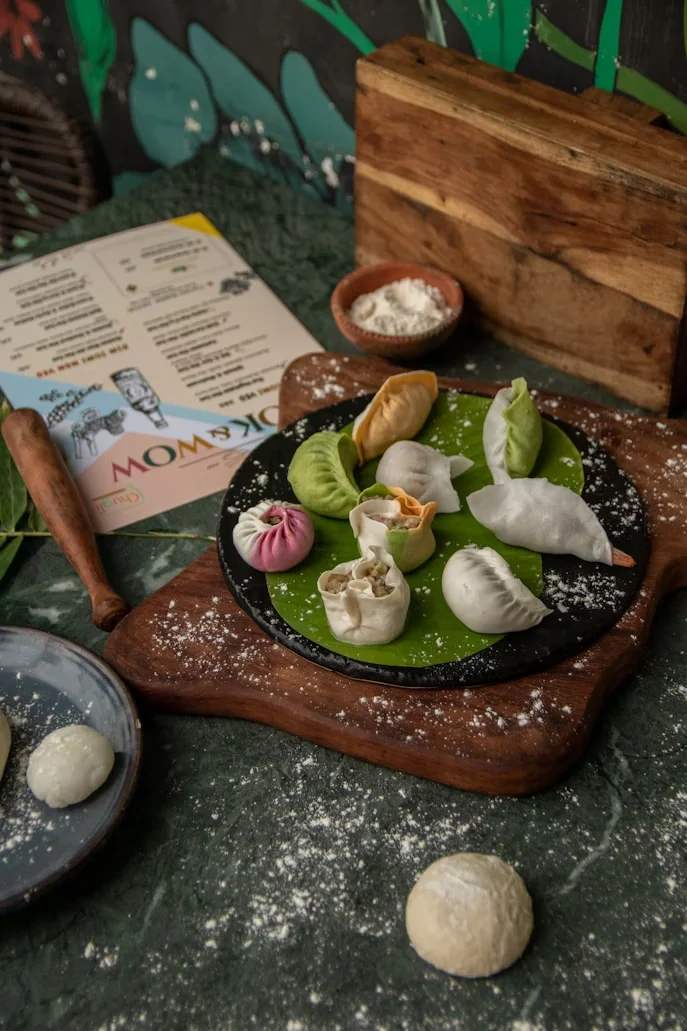Ah, Dim Sum. Just the name conjures images of bustling teahouses, clattering chopsticks, and steaming baskets piled high with deliciousness. If you’ve ever found yourself wandering through the streets of Guangzhou, Hong Kong, or even a vibrant Chinatown in the West, you’ve likely stumbled upon this glorious tradition. But what exactly is Dim Sum, beyond just “Chinese appetizers”? Let’s dive in!
The story of Dim Sum isn’t just about food; it’s about hospitality and the journey. Originally, Dim Sum, which literally translates to “touch the heart,” emerged along the ancient Silk Road. Weary travelers and merchants would stop at roadside teahouses for a cup of tea to refresh themselves. Over time, these teahouses started offering small snacks to accompany the tea, realizing that a little bite could “touch the heart” and provide sustenance for the long journeys ahead.
Fast forward to today, and the tradition has evolved into a full-blown culinary experience, often enjoyed with family and friends, especially on weekends. It’s not just a meal; it’s a social event, a ritual.
More Than Just Dumplings: The Wonderful World of Dim Sum
When most people think of Dim Sum, their minds immediately jump to dumplings. And yes, dumplings are a huge part of it, but oh, there’s so much more! The variety is truly astounding, ranging from savory to sweet, steamed to fried, and everything in between. Here are just a few of the superstars you’ll encounter:
Steamed Delights: The Classics
-
Har Gow (Shrimp Dumplings): These translucent, delicate dumplings, often resembling little white pearls, are filled with succulent whole or chopped shrimp. A true test of a Dim Sum chef’s skill!
-
Siu Mai (Pork and Shrimp Dumplings): Open-faced and typically topped with a fish roe or a single pea, Siu Mai are hearty, savory, and an absolute must-try.
-
Char Siu Bao (BBQ Pork Buns): Soft, fluffy white buns bursting with a sweet and savory BBQ pork filling. There are also baked versions with a slightly golden, crispy top.
-
Cheung Fun (Rice Noodle Rolls): Silky smooth rice noodle sheets, often wrapped around shrimp, beef, or Chinese donut (youtiao), and drizzled with a savory soy sauce. The texture is incredibly satisfying.
Fried and Baked Goodies: Crispy and Crunchy
-
Spring Rolls (Chun Juan): Crispy, golden-brown rolls filled with vegetables, and sometimes meat. Perfect for dipping in sweet and sour sauce.
-
Wu Gok (Taro Dumplings): A personal favorite! These are deep-fried taro dumplings with a crispy, lacy exterior and a soft, savory filling of pork and mushrooms. Don’t let the taro fool you; it’s not sweet!
-
Lo Bak Go (Turnip Cake): Pan-fried savory cakes made from shredded daikon radish, rice flour, and often studded with dried shrimp and Chinese sausage. Crispy on the outside, soft on the inside.
Sweet Endings: A Delicate Dessert
-
Dan Tat (Egg Tarts): Flaky pastry shells filled with a sweet, wobbly egg custard. A perfect end to a savory meal.
-
Ma Lai Go (Steamed Sponge Cake): A light, airy, and slightly sweet steamed brown sugar sponge cake. Comfort food in cake form.

The Art of the Dim Sum Experience: Trolleys, Teapots, and Tally Sheets
The traditional Dim Sum experience is almost as much about the atmosphere as it is about the food. Picture this: you’re seated at a large, round table, often with a lazy Susan in the middle. Waiters and waitresses push around trolleys laden with steaming baskets and plates of various Dim Sum. They’ll call out the names of the dishes, and you simply point to what you want. It’s a delightful, slightly chaotic ballet of food and eager diners.
Each dish is usually served in small portions, typically three or four pieces, encouraging you to try a wide variety without getting too full too quickly. As you pick dishes, the server stamps a card on your table, tallying up your feast. At the end, they just count the stamps, and voilà – your bill!
And let’s not forget the tea! Tea is an integral part of the Dim Sum experience. Popular choices include Pu-erh (known for aiding digestion), Oolong, and Jasmine. Your teapot will be refilled continuously; a simple tip of the lid is usually enough to signal for more hot water.
Dim Sum Etiquette (or lack thereof, sometimes!)
While there aren’t many strict rules, a few things will help you navigate a Dim Sum meal like a pro:
-
Share everything: Dim Sum is designed for sharing. Don’t hog those Har Gow!
-
Use chopsticks: While forks are usually available, using chopsticks is part of the fun.
-
Don’t waste food: Order what you can eat. It’s easy to get carried away.
-
Be patient: Especially during peak hours, Dim Sum restaurants can be bustling. Embrace the energy!
Dim Sum is more than just a meal; it’s a cultural institution, a culinary adventure, and a fantastic way to spend a few hours with loved ones. So, next time you have the chance, gather your friends, find a good teahouse, and let your heart be touched by the wonderful world of Dim Sum!
